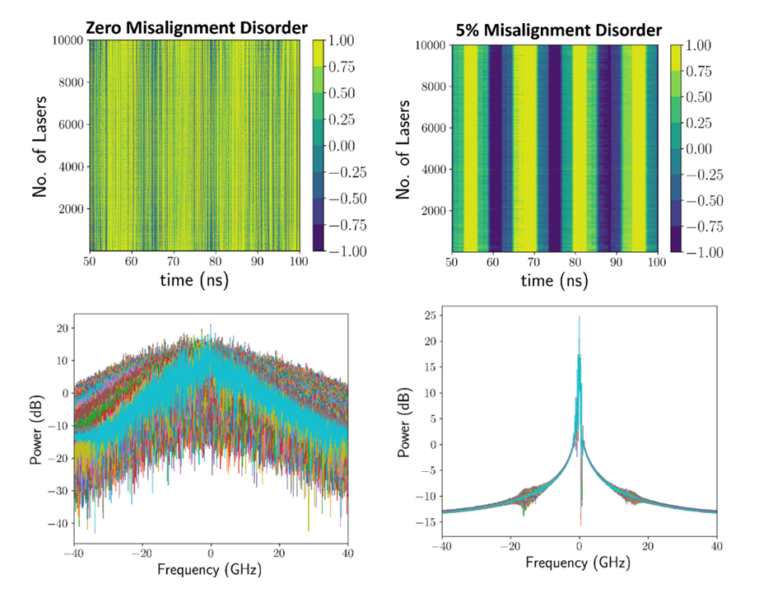The synchronization dynamics of coupled nonlinear oscillators have been extensively studied so far under the implicit assumption that disorder tends to weaken synchronization. Quite recently, however, it has been unambiguously shown both theoretically and experimentally that under certain conditions, the presence of disorder can counterintuitively promote or enhance synchronization through the exchange of information, giving birth to the new field of disorder-promoted synchronization (DPS) [1-3]. In this regard, our work dispelled the widely held assumption that generic differences among oscillators are detrimental to synchronization. The realization that disorder can promote synchronization broadens our understanding of complex systems. It challenges the simplistic view that order always leads to order and has implications for designing and understanding various real-world systems like large-scale laser arrays that are of interest to the scientific community.
The primary objective of our research is to systematically investigate DPS in large-scale nonlinear oscillator arrangements that could in principle involve thousands of coupled elements. Most of our efforts are directed towards synchronization of coupled laser networks. However, we are also interested in exploring DPS in various other physical settings like Josephson junctions and coupled nonlinear oscillators. In our research, we pursue experimental, computational, and analytical tools that allow us for a comprehensive exploration of DPS and routes to synchronization. Recently, we have demonstrated additional effects of DPS, i.e., using one kind of disorder to overcome the destructive-to-synchronization effect of another kind of disorder and established near perfect phase-locked behavior in coupled arrays of semiconductor diodes [4].
100x100 2-D Coupled Laser Array

Fig. 1: Illustration of disorder-promoted synchrony in a large 2D array of lasers. The array is made of 100 x 100 lasers and shows a low level of synchrony when subject to feedback without misalignment, as illustrated in the left panels showing the temporal evolution of the phase (top) and the electrical spectrum (bottom). Adding a 5% misalignment disorder leads to almost perfect synchrony as highlighted in the right panels.
Works Cited
- Braiman, J. F. Lindner, and W. L. Ditto, “Taming spatiotemporal chaos with disorder,” Nature 378(6556), 465–467 (1995).
- Braiman, W. L. Ditto, K. Wiesenfeld, and M. L. Spano, “Disorder-enhanced synchronization,” Physics Letters A 206(12), 54–60 (1995).
- Liu and Y. Braiman, “Coherent beam combining of high-power broad-area laser diode array with near diffraction limited beam quality and high-power conversion efficiency,” Optics Express 21(25), 31218–31228 (2013).
- Nair, K. Hu, M. Berrill, K. Wiesenfeld, and Y. Braiman, “Using disorder to overcome disorder: A mechanism for frequency and phase synchronization of diode laser arrays,” Physical Review Letters 127(17), 173901 (2021).